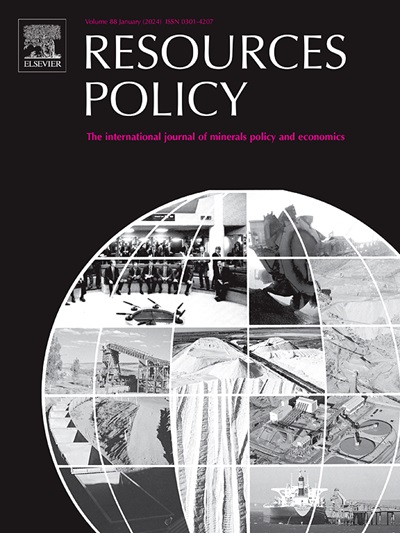Greening the mines: Managing efficiency, environmental impact, and ecology in Chinese mining regions
IF 10.2
2区 经济学
0 ENVIRONMENTAL STUDIES
引用次数: 0
Abstract
This research aims to devise a statistically sound method for evaluating the efficacy of green development in the mining industry across various Chinese regions while keeping environmental challenges and ecological conservation in view to identify potential challenges and opportunities for implementing green growth initiatives in the mining industry. A three-stage network structure is utilized for evaluation. By employing a dynamic network framework utilizing the Slacks-Based Measure (SBM) method, the research explores the progress of green development in the mining sector across 21 Chinese regions from 2005 to 2022. The Malmquist index examines the changing trends and internal efficiency of green development in mining. The outcomes suggest that productivity levels decreased initially in most provinces before improving over time. The efficiency of the overall process is closely linked to the enhancement of ecological efficiency, which is a direct outcome of adopting sustainable mining practices. Disparities in the pace and extent of environmentally friendly economic development are evident among provinces, with some experiencing annual development rates exceeding 25 %. Eastern regions like Hubei, Fujian, and Shandong show promising trends and opportunities. However, challenges persist in the Northeast and Xinjiang provinces, where inefficiencies may be recognized in several sub-processes.
矿山绿化:中国矿区管理效率、环境影响与生态
本研究旨在设计一种统计上合理的方法来评估中国不同地区采矿业绿色发展的有效性,同时考虑到环境挑战和生态保护,以确定在采矿业实施绿色增长举措的潜在挑战和机遇。采用三级网络结构进行评价。采用基于slacks测度(SBM)方法的动态网络框架,研究了2005 - 2022年中国21个地区采矿业绿色发展的进展情况。Malmquist指数考察了矿业绿色发展的变化趋势和内部效率。研究结果表明,大多数省份的生产率水平最初有所下降,之后才逐渐提高。整个过程的效率与提高生态效率密切相关,这是采用可持续采矿做法的直接结果。各省之间在环境友好型经济发展的速度和程度上存在明显差异,有些省份的年增长率超过25%。湖北、福建、山东等东部地区呈现出良好的发展趋势和机遇。然而,东北和新疆省的挑战仍然存在,在几个子过程中可能会发现效率低下。
本文章由计算机程序翻译,如有差异,请以英文原文为准。
求助全文
约1分钟内获得全文
求助全文
来源期刊

Resources Policy
ENVIRONMENTAL STUDIES-
CiteScore
13.40
自引率
23.50%
发文量
602
审稿时长
69 days
期刊介绍:
Resources Policy is an international journal focused on the economics and policy aspects of mineral and fossil fuel extraction, production, and utilization. It targets individuals in academia, government, and industry. The journal seeks original research submissions analyzing public policy, economics, social science, geography, and finance in the fields of mining, non-fuel minerals, energy minerals, fossil fuels, and metals. Mineral economics topics covered include mineral market analysis, price analysis, project evaluation, mining and sustainable development, mineral resource rents, resource curse, mineral wealth and corruption, mineral taxation and regulation, strategic minerals and their supply, and the impact of mineral development on local communities and indigenous populations. The journal specifically excludes papers with agriculture, forestry, or fisheries as their primary focus.
 求助内容:
求助内容: 应助结果提醒方式:
应助结果提醒方式:


